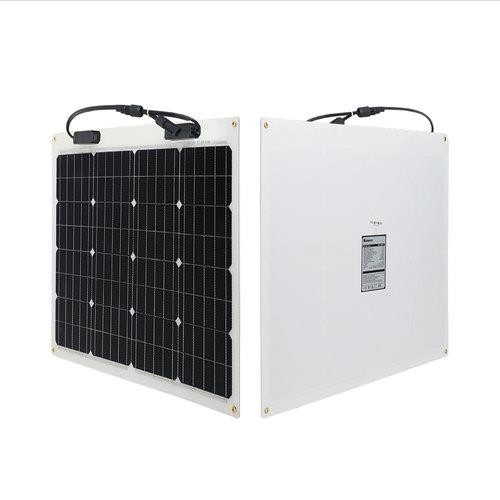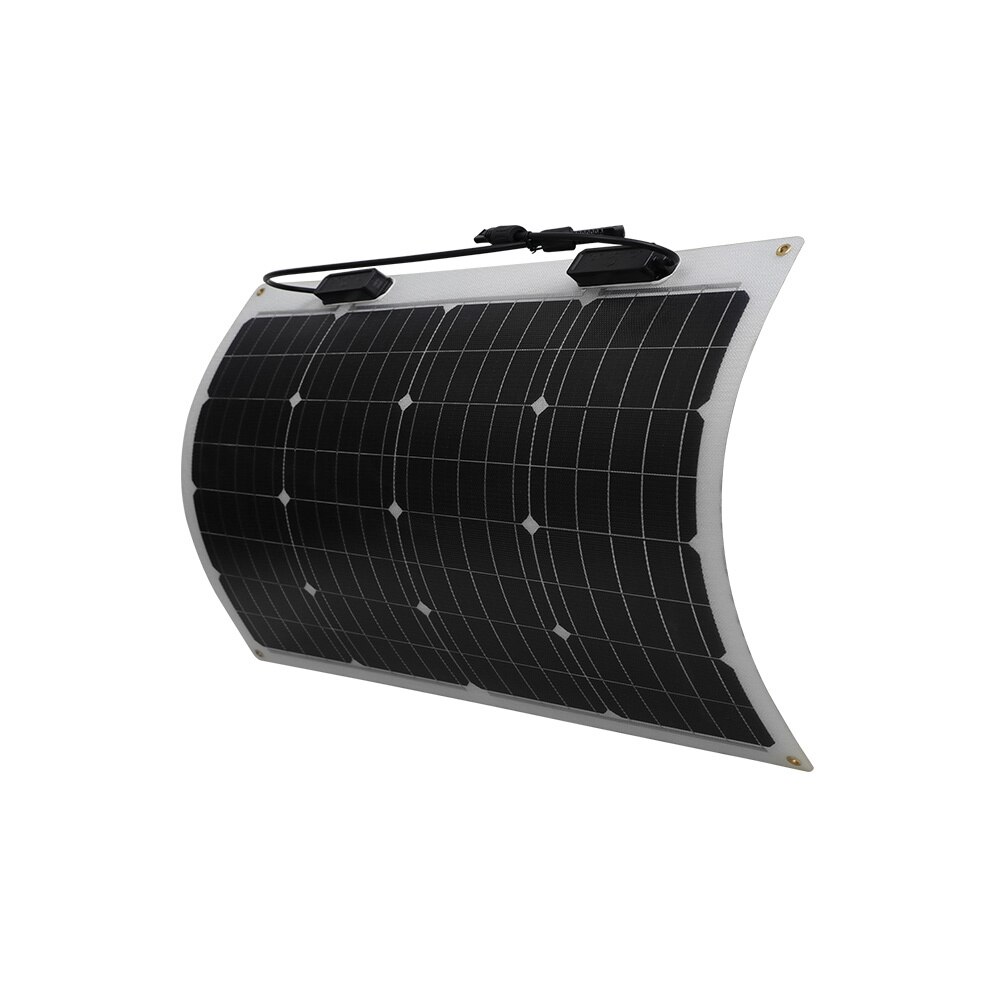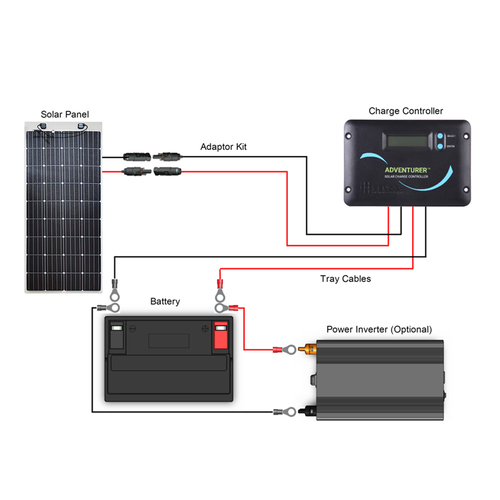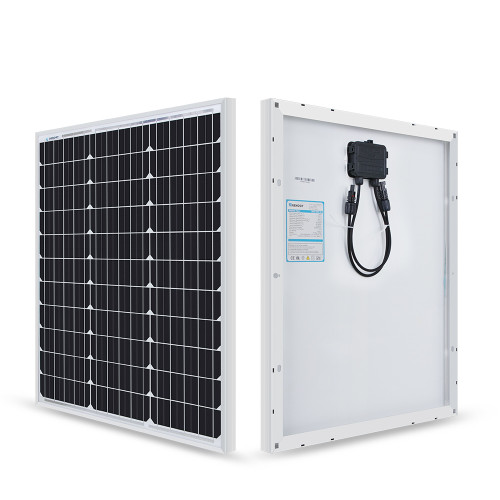Description
Traditional solar panels are rigid and often enclosed in tempered glass. The Renogy 50W Flexible Solar Panel is anything but traditional. Perfect for marine use or placement on top of a van or vehicle, the Renogy 50W Lightweight Solar Panel is thin and capable of flexing up to 248 degrees. At 2.87 pounds, this flexible solar panel weighs only a quarter of its traditional 50W counterpart. Highly flexible, this lightweight panel can easily be installed on curved surfaces. This panel can also be used for other various applications, including providing power on a boat or teardrop trailer.
Mounting Recommendation: Modules must be mounted using silicone structural adhesive on the backside of the panel, grommets are only to be used for non-mobile applications. For detailed installation methods, please consult a local contractor for guidance.
Key Features
- This panel is capable of meeting a wide range of applications where standard panels can be inconvenient to mount, such as on the curved roof of an airstream
- Thanks to advanced polymer materials, this product weighs 70% less than conventional solar panels, making transportation and installation a breeze
- Hardly noticeable, the Renogy 50W Lightweight Panel laid flat is only a tenth of an inch tall making it ideal for a stealthy solar setup.
- Rigorously tested, the 50W panel was designed to withstand extreme wind of up to 2400 Pa and snow loads of up to 5400 Pa
Package Includes
|
Renogy 50W Flexible Solar Panel
1 x
|
| Renogy 50 Watt 12 Volt Flexible Monocrystalline Solar Panel | |||
|---|---|---|---|
| Electrical Specifications | Mechanical Specifications | ||
| Maximum Power at STC: | 50W | Cell Type | Monocrystalline (6.25 x 1.85 in) |
| Open Circuit Voltage | 24.3V | Number of Cells | 36 (4 x 9) |
| Short Circuit Current | 2.75A | Dimensions | 26.9 x 20.0x 0.16 in (683 x 508 x 4 mm) |
| Optimum Operating Voltage | 20.3V | Weight | 2.87 lbs (1.3 kg) |
| Optimum Operating Current | 2.47A | Front Glass | Tempered Glass 0.13 in (3.2 mm) |
| Module Efficiency | 14.4% | Frame | Black Anodized Aluminum Alloy |
| Maximum System Voltage | 600 VDC UL | Connectors | Solar Connectors |
| Maximum Series Fuse Rating | 15A | Fire Rating | Class C |
| Thermal Characteristics | Solar Connectors | ||
| Operating Temperature | -40°F to 185°F(-40ºC to +85ºC) | Rated Current | 30A |
| Nominal Operating Cell Temerature (NOCT) | 45±2ºC | Maximum Voltage | 1000VDC |
| Temperature Coefficient of Pmax | -0.37%/C | Maximum AWG Size Range | 10AWG |
| Temperature Coefficient of Voc | -0.28%/C | Temperature Range | -40ºF to 194ºF |
| Temperature Coefficient of Isc | 0.048%/C | IP Rating | IP 67 |
Warranty Information
| Panels |
25-year power output warranty: 5 year/95% efficiency rate, 10 year/90% efficiency rate, 25-year/80% efficiency rate 5-year material and workmanship warranty |
Certification
1.What do I need to complete my off-grid solar power system ?
2. What does off-grid and on-grid mean ?
3. Why is my solar panel under producing ?
4. How should I connect solar panels in my electrical circuit (series vs parallel)?
5. How many solar panels do I need ?
6. Can I walk on flexible solar panels?
7. How to clean solar panels?






























